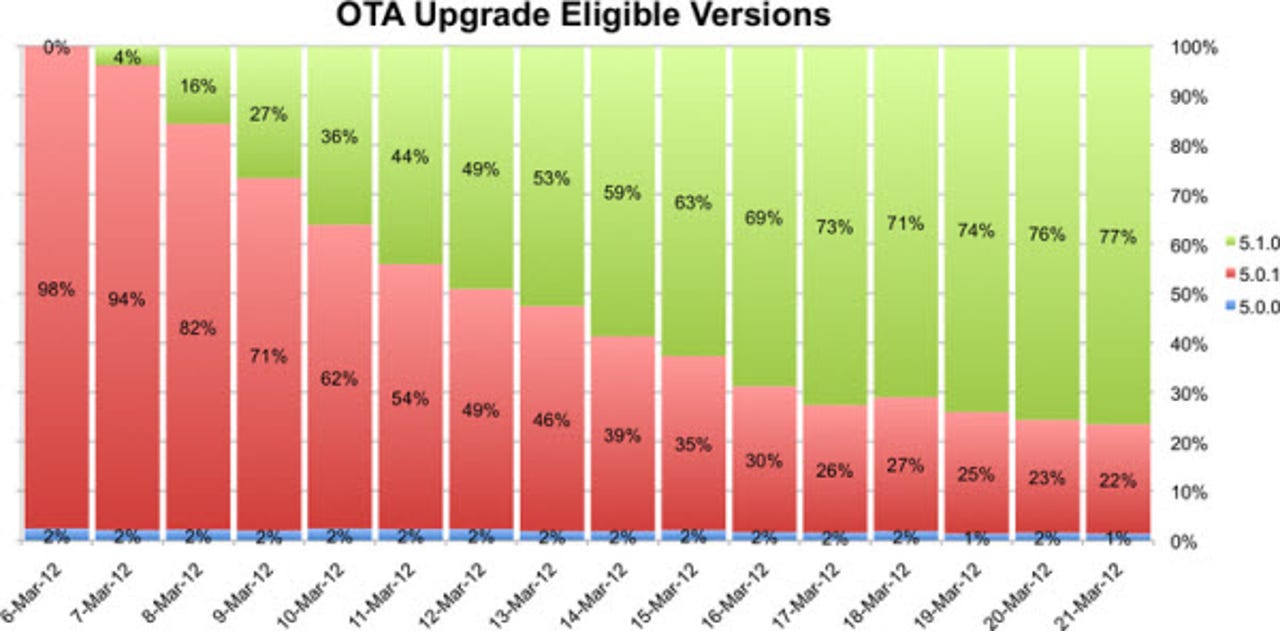iOS 5.1 market share at Android 2.3 'Gingerbread' levels after 15 days

Over-the-air (OTA) updates for iOS devices such as the iPhone and iPad, combined with strong sales of Apple's new iPad, have helped to drive up adoption of the latest 5.1 release, according to data released by iOS and Mac developer David Smith.
iOS 5.0 introduced the new OTA update feature which allowed iPhone and iPad owners to download smaller, incremental operating system updates directly to their iOS devices, without the need for connecting it to a computer running iTunes.
Smith analyzed the data gathered by his free Audiobooks app -- which sees some 100,000 weekly downloads -- to track the adoption rates for the latest iOS 5.1 update. He described the
What Smith found was that across all iOS platforms it took only 15 days from release for iOS 5.1 to get to 61 percent, the same percentage of users as the most popular version of Android 2.3, 'Gingerbread'. However, what's more interesting is that in the same time frame the iOS adoption rate on iOS 5 and 5.0.1 devices that support OTA updates hit 77 percent.
Note that these figures include both older devices that have been upgraded to iOS 5.1, as well as new devices sold with the new operating system pre-installed.
Smith estimates that there should see a near total adoption of 5.1 for users eligible for OTA update by the first week or two of April. Compare this to Android's latest 4.0 ‘Ice Cream Sandwich' release that was made public back in October of last year and even now only powers only 1.6 percent of Android devices. If iOS users are anything to go by, it seems that they are eager for updates and will jump on them quickly if they are made available.
The lower drag and easier the update process, the quicker people will update. This is good for users because it brings new features and security patches to existing hardware, and good for developers because they have to support fewer versions of the platform in question.
Image credit: David Smith/Cross Forward Consulting.
Related:
- Why the new iPad battery meter is behaving just as it should
- Oops! New iPad drop test
- New iPad accounts for 6 percent of iPad traffic
- Why Apple doesn't need to innovate much to stay ahead of the competition
- New iPad's most revolutionary feature is its battery
- Why Apple's iPad rebranding makes sense
- iOS 5.1 available for download
- New iPad is bad news for Android tablets
- iPad 3 will help Apple grab 70 percent of the tablet market in 2012
- How do I securely wipe my iPad for resale?
- Five great games that push the iPad 3's Retina display
